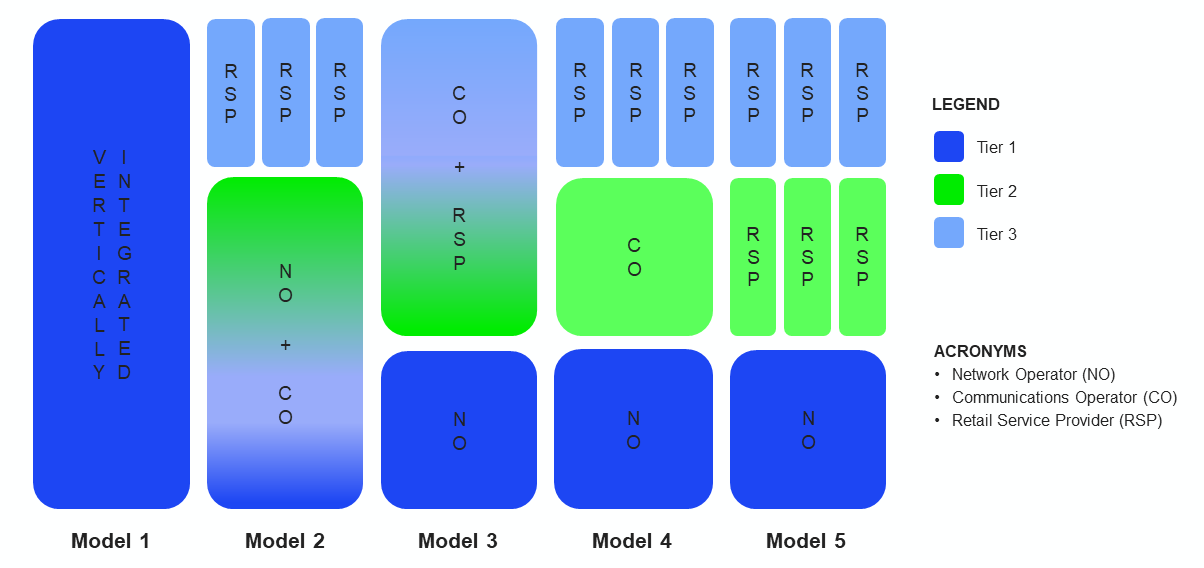Drive Your Broadband Growth Strategy With Open Access Networks

Open access networks (OAN) offer broadband service providers (BSPs) a new opportunity to drive their broadband growth strategy. In an OAN model, network infrastructure is separate from service delivery—where network owners provide and manage the network infrastructure and retail service providers (RSPs) offer services to end users. OANs are essential in facilitating a competitive market environment and are gaining momentum in the U.S. as network operators look for ways to capitalize on network assets and increase revenue.
With an OAN, risk, and revenue are shared among network owners and RSPs, offering a non-discriminatory model where all providers compete on equal terms—helping encourage service innovation. The most significant benefit of OANs is to the consumer; offering a choice of service providers results in higher network take rates and average revenue per unit (ARPU).
OAN Tiers and Models
A fiber-to-the-home (FTTH) OAN is comprised of three tiers:
- Tier 1 represents the passive infrastructure—which includes ducts, fiber, poles, enclosures, etc.—and is typically managed by a network operator (NO).
- Tier 2 represents the active infrastructure—including the physical network equipment, such as optical line terminals (OLTs) and optical network terminals (ONTs)—and is typically managed by a communications operator (CO).
- Tier 3 represents the retail services offered—such as data, voice, and video—and is managed by RSPs.
This tiered structure offers various business models that may be implemented in an OAN environment. Models vary from a single vertically integrated operator where all three tiers are owned and operated by the same entity to a model where the network is fully separated with different ownership for each tier.
Figure 1: Open Access Network (OAN) Models

Which OAN Model Is Right?
The open-access business model depends on various factors, such as the regulatory or competitive environment, market demographics, municipal partnerships, funding, and the core business competencies of the operators.
The OAN business model will vary from location to location for many network operators, particularly those in multiple cities. For example, in one market, they may participate only as an RSP, and in another, be fully vertically integrated, and in another, participate as both an RSP and a communications operator. The choice is heavily dependent on the environment of the market.
Objectives of OANs
The same four objectives drive many FTTH OANs:
- Coverage: A common focus is helping close the digital divide by offering advanced services to un-served and underserved areas. The OAN is built to cover the most significant number of users and deliver a consistent end-user experience.
- Competition: An OAN infrastructure provides a level playing field and equal opportunity for RSPs to focus on differentiation and innovation. For the end-user, OANs provide maximum choice in both services and providers, even allowing delivery of multiple applications from multiple providers with predictable levels of quality.
- Cost Effectiveness: An OAN infrastructure allows costs to be shared among multiple service providers and increases the utilization of the infrastructure. Standards-based technology allows competitive vendor pricing and minimizes technology risk. Finally, automation can be used for network control and service provisioning, a pivotal element to cost savings.
- Customer Care: An OAN allows for consistent service reliability, availability, and security to service providers and end-users.
Related Articles




